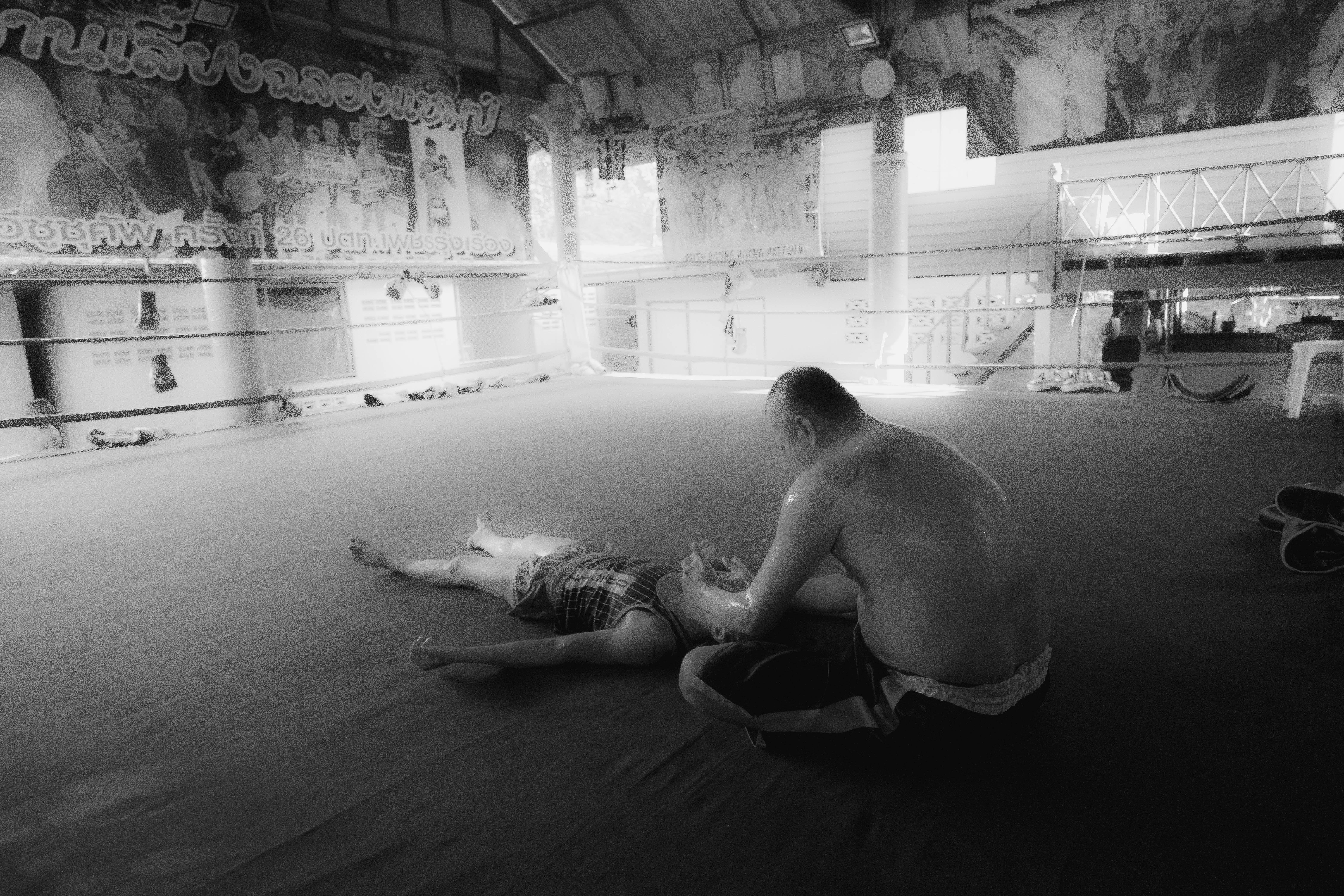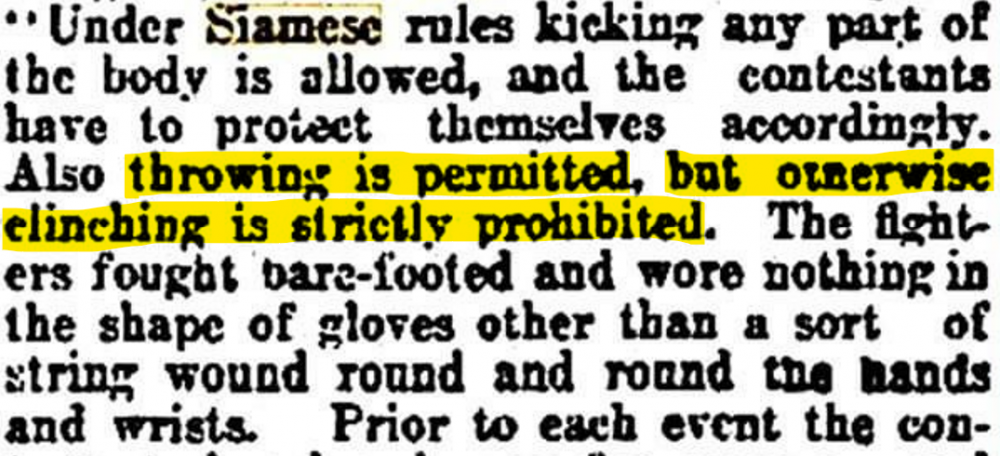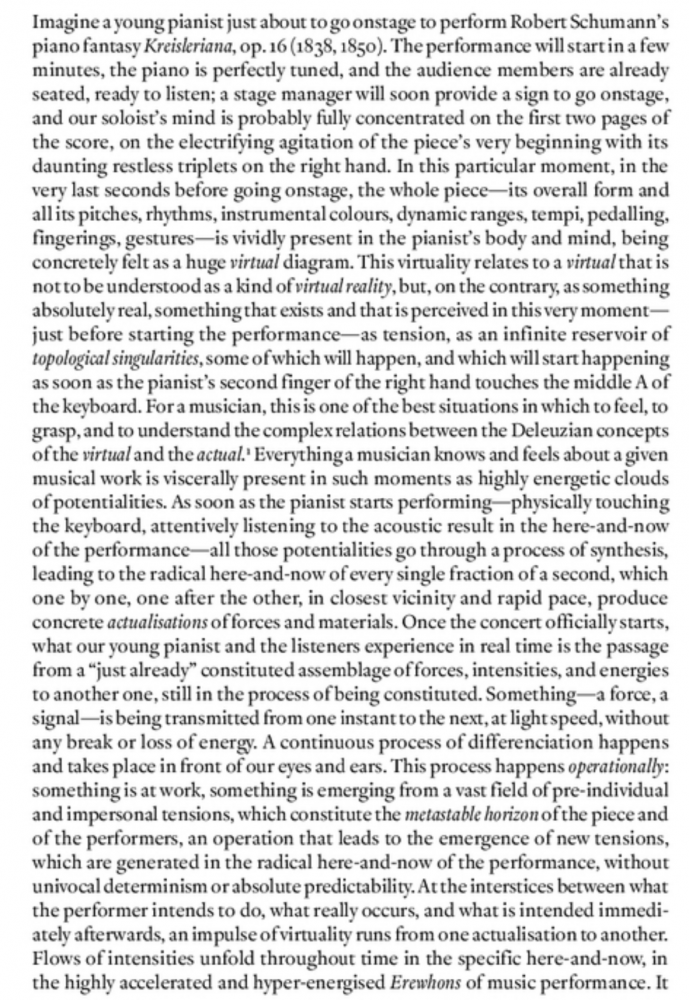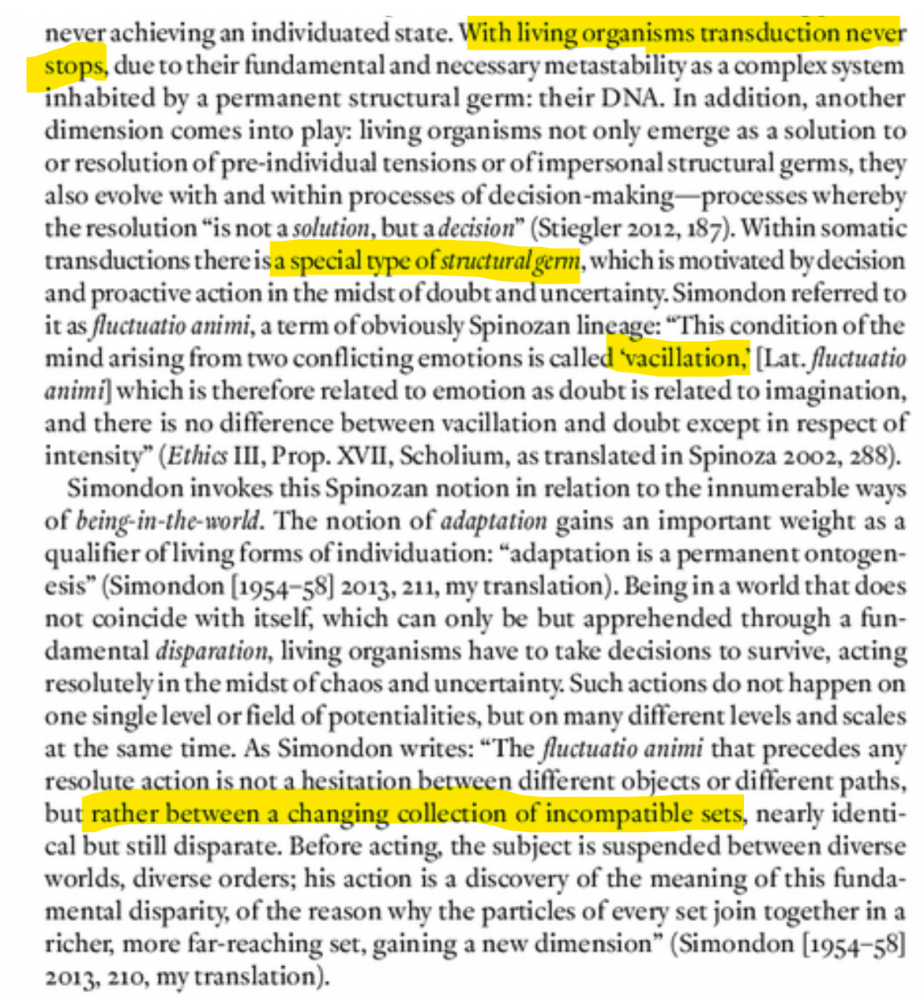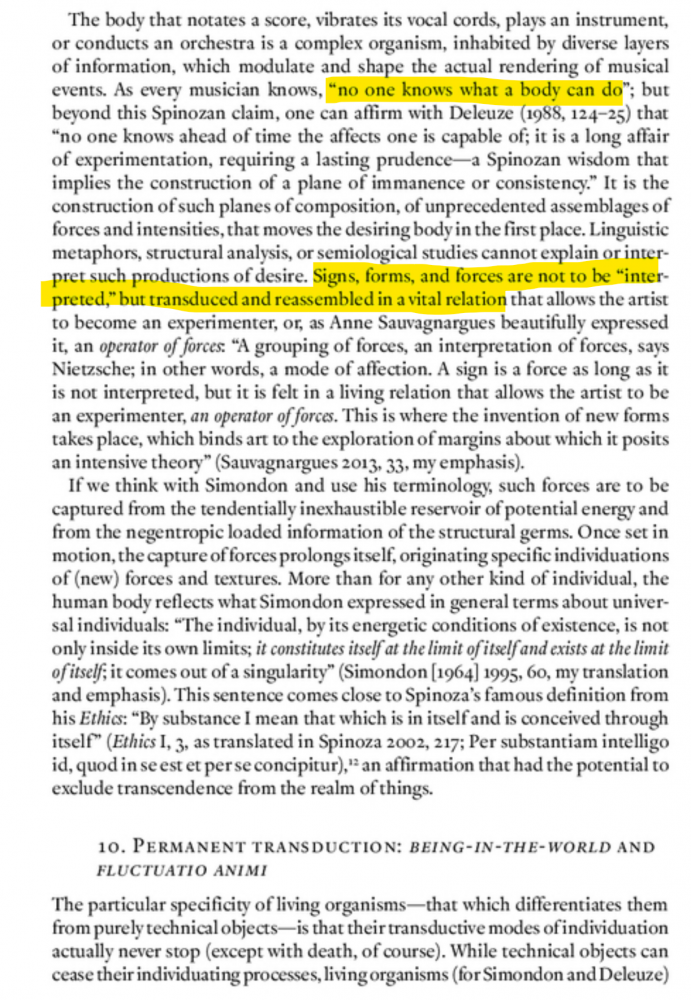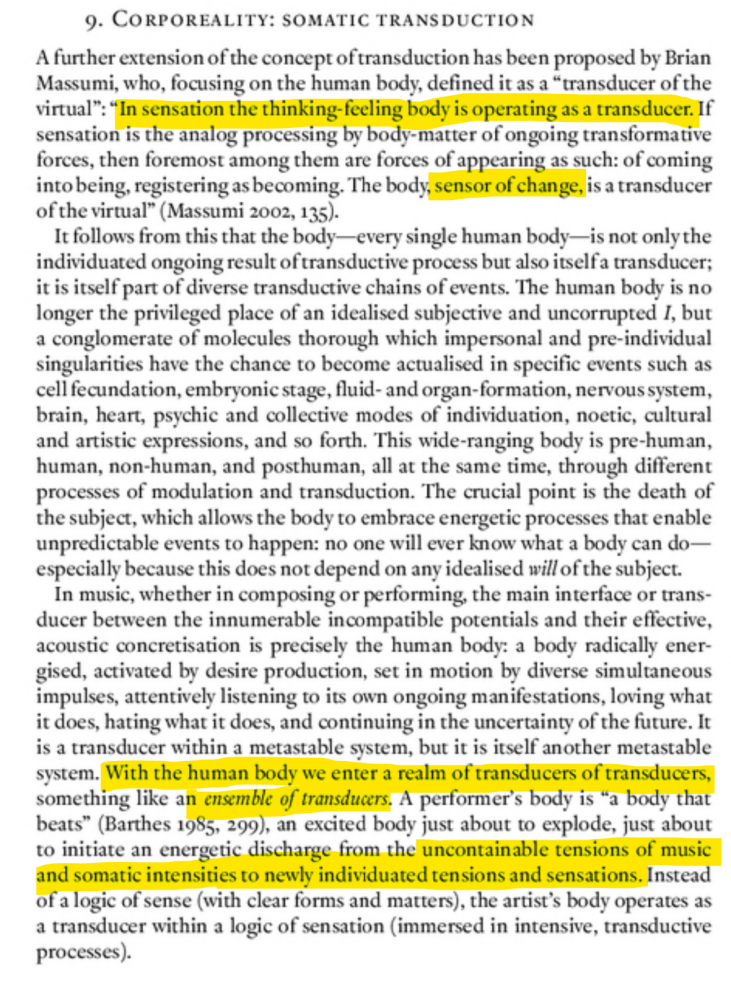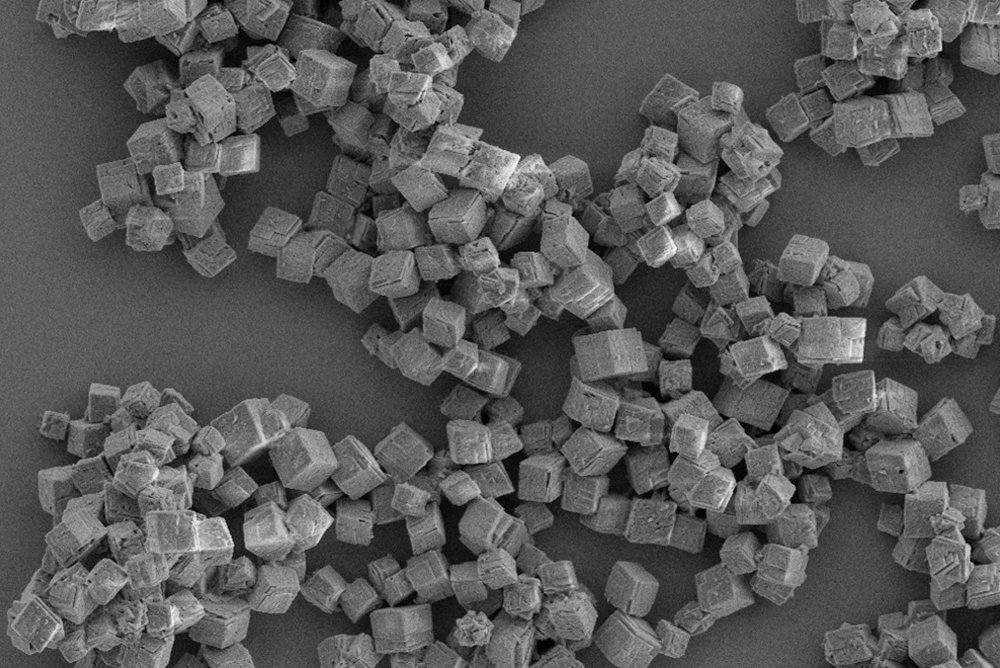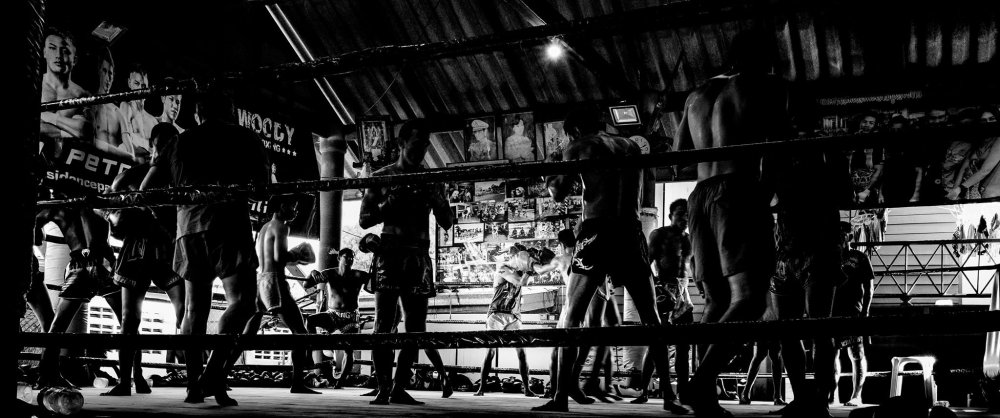-
Posts
2,258 -
Joined
-
Days Won
497
Everything posted by Kevin von Duuglas-Ittu
-
More on N+1 and N-1 from Duchamp and Panes of Immanence TIME AND AGAIN, DUCHAMP INSISTED that the Large Glass (fig. 1) was also (perhaps even in the first place) a consideration on perspective. When Pierre Cabanne asked him how he had arrived at the idea, he replied, “Perspective was very important. The Large Glass is actually a rehabilitation of perspective, which had been completely neglected and decried. With me, perspective became absolutely scientific . . . It was scientific mathematical perspective . . . based on calculations and measurements.”1 To Richard Hamilton he likewise admitted: “The projection [of each part of the Glass] in perspective [on the Glass] is a perfect example of classical perspective, I mean that I imagined the various elements of the bachelor machine first of all as arranged behind the Glass, on the ground, rather than as distributed over a surface in two dimensions.”2 We know that Duchamp drew up several perspective diagrams in this way, to situate the various pieces of his Bachelor Apparatus—now on a reduced scale, now life-size—before they were outlined on the surface of the Glass. from Duchamp and the Classical Perspectivists
-
This is going to be very sketchy. It will be jumping between associations and thought network hubs, building out a vision I had upon waking this morning. Sometimes in the half-dream things come to you, that are worth unpeeling. I've been slowly working my way through Agamben's The Highest Poverty: Monastic Rules and Form-of-Life which is a study of Medieval monastic rule-guided life (in quite fine detail), with a view towards Wittgenstein's elementary solve for questions of Philosophy, among so many other things. Wittgenstein's powerful tool was to examine just what rule-following is (whether this be following mathematical processes or playing various language games), and ostensibly point out that generally there is "no rule for how to follow a rule". There is no way outside of rule-governed behavior and Life. Instead, we are all in Forms of Life. It's probably not a very good summation, as it's been many years since I engaged Wittgenstein, but that's my immediate stake. Agamben takes up Wittgenstein's rule-following examination and applies it to a period in Western Civilization where lives became quite starkly defined and governed by rules. It writes about the nature of rules, and how they differ from Laws. I've already taken a deep dive foray into Bourdieu's concept of Habitus and how it exemplifies itself in the Thai kaimuay, if you want to hypertext swerve from my point here you can. It's about how rule-following and custom conditions and communicates the subject in Thailand's traditional kaimuay: What struck me this morning was actually the way in which monastic life, which was rule-governed almost to the minute of waking life, with times and kinds prayers, meditations and rituals that mark out the hours (he writes about how monks were turned into living clocks), with great rigor. The window that is opened is the way in which all of our lives are rule-governed in important, hidden ways, and that we ourselves are becoming living clocks as well. But this is not the point of where I am going, just setting ground. What occurred to me was the way in which the simplification of monastic life, it's bounded sense of living rules is very much like a host of human actions which might be characterized as (n-1) inscriptions. N is the dimension we live in, so to speak (and I think we are using it analogically at this point, we can also call it an order of complexity, and (n-1) is rule following actions/creations which drop down in an order of complexity, and importantly inscribe these actions on a medium, a bordered medium. Medieval monks are inscribing the complexity of the world (their otherwise lived worlds beyond monastery walls), in an (n-1) dimensional way, through rule following. For some reason, upon waking, I pictured the way in which we now all interact and express ourselves through screens. Screens that act like panes. There is a (n-1) dimensional reduction of the complexity of our lives, and all these interactions are rule-following on several levels of description. In a certain sense these panes are little different than the inscriptions of a monastic life, or the way in which an icon painter would paint on treated wood: They are bounded, rule-following inscriptions on a medium, (n-1) dimensional reductions. Much has been made about Plato's (n+1) dimensional picture of the world. We live in this world of shadows (n), the shadows are cast by a dimension of a higher order than our own (n+1), and the purpose of Philosophy (and religion) is to connect up this world N, with N+1. Platonism runs through all of Western Culture, and in schools of critical philosophy transcendence (the mark of Platonism, trying to get from N to N+1) is scorned. It's thought to be the great mis-step, principally because it devalues this world, for another more imaginary one, one that has often been in the hands of dogma for the purposes of social control. What is missing from this picture of Platonisms, hidden and outright, are the ways in which we actually perform or construct transcendence through (n-1) operations. This is the quintessence of Art, which also is often in the service of Platonism. Here, within the bounds of this rule-governed, or rule-conditioned inscription (let's say an icon painting) an N-1 simplification casts our eyes to an N+1 reality. What is operative here though is the very experience of how N-1 releases itself, and calls up "N" in an expression or experience of transcendence in an everyday way. If we look at a hand written letter by our mother who has passed, every jot, every gap in words, every word-choice, every piece of it calls up a world far more complex and rich than what is "contained" in that letter. The inscription holds transcendence, and does so in everyday ways. Scrolling through Twitter on an iphone, a bounded, rule-governed or rule-conditioned inscription in a medium (n-1), is an transcendent experience to our world of N. These are pane of immanence. There is wordplay here, as the Philosopher Gilles Deleuze proposed a metaphysical plane of immanence, the wikipedia summation of which is below. Hopefully you can see the difference between joining a plane of immanence, and constructing a pane of immanence. We leave aside some of the vitalist and semi-transcendent operations of Deleuze's project when plane become pane. The idea here though is just to focus on operations of N-1 dimensional reductions, in rule-governed, rule-conditioned ways, so was to leverage the dimensional shift between N-1 and N. And I do believe these go well beyond the human. They can be anything from RNA inscriptions of life forms to a new diet regime to lose weight. The phrase occurs sometimes, that of "playing God", but really anytime we are de-dimensionalizing Life, moving from N to N-1, we are spring loading a transcendent effect...and effect which is immanent. It could very well be that Platonism (and we know this does not all flow from Plato himself, he just codified it, brought N to N-1, in a particular powerful and historically lasting way) was simply a formulation of N-1 inscription which makes up all of Life itself, and is carried forward through rule-governed, rule-conditioned ways. We all are constructing Panes of Immanence everyday, through all our rule-following actions of inscription. How we walk into an office we work at. How we compose an email. How watch movies from our couch. How we eat. The ways we have turned our lives into clocks (that's a slightly different story). For me it comes to learning to see all these flattenings as panes. Which is to say, a dimensional reduction of complexity, that in a rule-governed/conditioned way interacts with and encodes its medium. These inscriptions are meant to be released. N-1 is meant to be unfolded into N. And this is immanence. Because my writings here almost always have to do with traditional Muay Thai and fighting, this brings up back to what exactly a fight is. (We'll leave aside the whole of training which makes up a great deal of a fighter's life, and that sum of inscriptions.) A fight is an N-1 inscription of the complexity of the world. It's rule-governed, rule-conditioned nature is directed to a material medium, composed of the ring and its opponent, and in a certain sense the fighter (like any artist) must join the medium in order to inscribe within it. The judges, the audience, the gamblers, they too make up aspects of the medium when the fighter is more aware. And in a certain, Old World way, it is an N-1 inscription which invokes an N+1 real, in the way that sparks, embers and lineations sketch out fire and form that lies beyond us.
-
switching to southpaw reasons?
Kevin von Duuglas-Ittu replied to Carter's topic in Patreon Muay Thai Library Conversations
One of the semi-principles of traditional Muay Khao style is a tendency to square up, I believe, because clinch is a squared-up technique set (mostly). To me this involves principles like keeping your opponent in front of you (not overturning on strike follow throughs), and advancing on the end of strikes (like stepping down after a knee in space, etc). This means often sacrificing power of any single strike, because strikes lead to other strikes, within a kind of squaring tendency. You can see this in Yodkhupon's footwork and pressure attacks, for instance. The Muay Khao fighter is "persistence hunting", setting up for a kill later in the fight. This means that even non-switching Muay Khao fighters of the past were adept at striking fairly square, and sometimes in the opposite stance by situation, and provides a natural connection point to close pressed western boxing. In the Library an interesting footwork centered recent session is this one on Boran balance, working towards a sense of flow. #117 Kru Kin Por Promin - Muay Boran Precision, Balance & Flow (93 min) watch it here A beautiful session under the instruction of Kru Kin teaching the foundations of Muay Boran, revealing the underlying basics of Thailand's ring Muay Thai. Balance, precision and flow. These are the principles that are the bones of Muay Thai, keys to footwork and transition and effective fighting. -
switching to southpaw reasons?
Kevin von Duuglas-Ittu replied to Carter's topic in Patreon Muay Thai Library Conversations
Thanks for studying the Library and supporting it! That's a good question. There are general reasons why southpaws have advantages over orthodox fighters, and this reasons are even bigger in Thailand because Thailand scores openside strikes higher than closed side strikes. The southpaw fighter has an open power alley to that open side, with the rear kick, a spearing knee and the left straight all "open". Of course the orthodox fighter in mixed stances ALSO has his/her power weapons "open" to attack the open side, but the supposed advantage is that there are many more orthodox fighters than southpaw fighters so southpaw are more comfortable in this faceoff of power side weapons, have spent much more time evolving their game to take advantage of it. For instance a lot of Thai southpaws traditionally developed very big left kicks (Yodsanklai is a perfect example, but there are many). In Sylvie's case though, it was for a different reason. As a caveat, lots of traditional Muay Thai training and older forms of Muay Thai were taught ambidextrously. There was much less of a single stance emphasis. This has really changed in contemporary Muay Thai. In the Samart Payakaroon session you can see this, Samart tells us he doesn't even know which stance he is, southpaw or orthodox. There are several sessions in the Library which show this ambidextrous quality from the older school. So switching is part of the heritage of Muay Thai. In Sylvie's case the move to Southpaw was recommended by the legend Karuhat who had cornered for her quite a bit, and trained her many times, as a solution to a problem she was having in orthodox. Sylvie is a Muay Khao fighter with lots of emphasis on clinch. From orthodox she had a problem with her primary grab with her lead arm. She would overturn. Which is to say the arm would wrap around too deeply, with the elbow behind the neck, and she would find herself somewhat bladed, with her lead foot between her opponent's feet. This is a very disadvantageous opening position for clinch. She would work her way back to positive positions most of the time, but against a few adept clinch fighters it would result in bad rounds or losses, because she started with a disadvantage. Karuhat moved her to southpaw to basically short circuit this clinch grab and overturn, and make her more squared up in initial clinch positions. Also, he reasoned, putting her power side up front (her right handed power) would give her more confidence in space, make her more offensively potent. Karuhat himself was a beautiful switching fighter, so in a way it wasn't really to become southpaw, more so as to build it that side of the attack and defense, so that one could switch. But first Sylvie had to commit to just Southpaw. I think she did so for two years. If you don't commit to it you just back out of it once you get stressed or uncomfortable. You have to learn how to solve problems from the left side. It takes time. A few things were pretty apparent. The first is that it did seem to correct the clinch overturn grab, and make her more square. Also, offensively she was more willing to fight in the pocket, and her left kick seemed to come out more easily, without some of the bad habits her right kick had developed. She beat several world champion level fighters as a southpaw. One of the challenges of moving to southpaw though, was that while offense seemed to get an automatic boost, defensively instincts suffered. This pretty common. You just are not used to seeing strikes from that orientation, you are through The Looking Glass. In Thailand this can be an issue because your openside will be exposed to big scores. As a Southpaw you have to be able to close your openside. Karuhat helped solve this to some degree with the Forward Check, as a kind of defensive cheat, which squares you up some, and also threatens attack (or switching), but mostly this defensive weakness of a new stance was lessened by simply being a pressure fighter. If you are newly as a southpaw and laying back in space, you can be picked off quite easily, but as a pressure fighter the time you spend at risk is decreased. This is the session in the Library where Sylvie actually makes the switch, you can watch it in real time over a few days, and she talks about the reasons for it: #20 Karuhat Sor Supawan 3 - Switching To Southpaw (144 min) watch it here 2x Lumpinee Champion Karuhat Sor. Supawan in this epic video posts installs a limited Southpaw core which leads to developing high level ideas found in his switching style: tracking and attacking the open side, watching for and dictating weight transfer. This is the blueprint of a legend's acclaimed fighting style. After about 2 years of really devoting herself to southpaw, I believe, Sylvie went back to orthodox, because at that point in her development she felt that the most important next step was learning how to bring more relaxation into her muay, and southpaw still had elements of stress and discomfort in it. What two years did though was to open up the possibility of switching as the occasion called for, more like how Karuhat fought. It built out an alternate side grammar. I hope that helps! -
Recommended Muay Mat Style Gyms in Thailand
Kevin von Duuglas-Ittu replied to CdotK's topic in Gym Advice and Experiences
I've not heard much about Sitmonchai in the last two years, but if there is one gym that is strongly associated with a fighting style, and produces that style in a competent way, that would be Sitmonchai. I'd be pretty surprised if you came to them looking to develop punch and lowkick styles and didn't get a LOT of support and nurture in that. The only other gym I could think of that might be like that, would be very, very different than Sitmonchai, would be Arjan Metprik's gym in Khorat, which has for decades taught a hard Muay Maat and lowkick style in a traditional way. But it is not a gym that really looks like it has had farang much, and seems mostly full of local kids long past its glory days in the early 2000s. But you can see Arjan's style in this Muay Thai Library session. #103 Metprik Silachai - Lost Techniques of Old School Muay Maat Lowkick Pressure (81 min) watch it here Wow what a session. Arjan Metprik was not only a great fighter of the Silver Age of Muay Thai, he created the relentless fighting style of 2001 Fighter of the Year Thongchai Tor. Silachai. It's just an amazing lowkick, knee and Muay Maat style full of pressure and toughness. See how he trains his fighters in this Old School Khorat gym: https://www.patreon.com/posts/48810277 Another option if you are into hands is Kem's Muay Thai gym below Khorat. He is largely credited with turning Muay Khao legend Yodwicha into a hands heavy international fighter, and works on hands and proper spacing and footwork a lot. It's a beautiful gym up on a mountain, and he's a very technical focused trainer. He won't be doing any punch-kick combos over and over, but his emphasis on hands in the constellation of all the Muay Thai weapons is really great. There are a few sessions with him in the Library, here is one: #53 Kem Sitsonpeenong 2 - Mastering Everything In Between (80 min) watch it here With one of the great technique krus of Thailand, Kem Kem Muaythai Gym, in his gym in the mountains just below Khorat. A special session that details how to work on all the things in-between strikes. So much to learn in this 80 minutes. He's a special teacher. -
Adding to this thread after some time. Above I reasoned that the exclusion of Japanese/Judo techniques from Muay Thai likely stemmed from the Japanese World War 2 occupation of Thailand, which bred resentment, and that may indeed be true to some degree. Unwritten rules, fight aesthetics may have shunned Judo-like techniques without them being illegal, as they are today. But the timing was just conjecture. I noticed though this Judo-like throw in 1959 British newsreel footage of what is described as a Thai championship fight. The ref does not react to the throw as if it is unusual: As my tweet suggests, the more austere shunning of Japanese techniques may have actually developed later, in the 1960s and 1970s, when perhaps Japanese Kickboxing was seen to have somewhat have appropriated Thailand's Muay Thai, with perhaps layers of other counter-Japanese cultural developments mixed in. At some point Thailand's Muay Thai developed distinct non-Judo aesthetics and rules.
-
One of the more difficult things to learn in Thai clinch is relaxation. Getting to leverage positions and controlling those positions with selective tension. It just comes with time. Just as when a surfer new to the board will be tense all over when up on a wave, and an experienced surfer only tense in very particular areas. But clinching someone that much larger to start out with is going to intensify any tension, and exhaust you. Maybe just note how much you are holding your breath, and the areas of your body you are tensing in. Also, maybe best is not to concentrate on throws or trips, just because these require greater feeling and already a firm knowledge of anchor positions, and trying to trip much larger opponents is advanced and can lead to frustration. Instead think about controlling positions from the inside, and breaking posture a bit, and scoring with knees repeatedly, turning your opponent, etc. Once you are able to control posture, breathe, and manipulate their position more, trips will become more accessible to you.
-
If it's not clear, from the array of materials above, if indeed the high art of traditional Muay Thai is a process of transduction, and the making of a fighter into a transducer (an artist), then the purposes of training, the sum of its experiences, is to create something analogous to the saturated solution which receives the "structural germ". This is in the sense in which the acquisition of skills, the experiences of training are in some real sense much more a process of saturation such that this germ can when it is introduced, will produce a cascading change in the qualities of the fighter, but as well, a training of a fighter such that in a fight, the fight itself works as a saturated solution, and the fighter the one who both saturates it (having developed a sense of narrative) and also he/she who then can introduce the structural germ to that solution, to produce the cascade which results in satisfying victory. Training often is just thought of in a structural building of skills, on top of skills. It is seen as a mechanical assemblage of parts (which ideally compliment and fit with each other). This assemblage analogy gets it wrong, and will just leave a relatively lifeless machination of parts, with few or rather short or contextless cascades, if any. The working upon "parts" (skills) is better understood as a saturation process, the experiences of saturation and growing sensitivity to a field. Readied for transduction. This likely gives insight into the traditions, customs and practices of traditional kaimuay Muay Thai training in Thailand, and why there is so little focus on technique, and the correction of technique (quite in contrast with the Western approximations and appropriations of Muay Thai). This also brings important perspective to training developments which are experienced as plateau'd, or stuck within a stage. As a general rule, if you are stuck the analogical solution is not saturated enough for transductive experiences. The practical wisdom in fighter development lies withing how to saturate a solution, and also also which structural germ to introduce and when.
-
I should note, as I have argued elsewhere when thinking about traditional training practices, and Bourdieu's concept of the Habitus, this is why techniques or specific patterns of Thailand's Muay Thai cannot really be taken out of Thailand contexts without radically losing much of their potency and meaning. The isolated patterns are being extracted from the cultural process of preparing, if you will, a highly saturated solution, which involves numerous charges and intensities, a solution which will react when it comes in contact with the structural germ. You can imitate the crystal that you see, copy its patterns in part, and try to build it on your own, of differing materials, or in part, but the process of crystallization, the way that something so ordered and beautiful comes out of what looks like a nothingness of water, is quite different from such exportation creates. It's a very different regime, something very, very different is expressed. This saturation of the solution (by analogy) can be thought about in terms of Bourdieu's Habitus and Doxa, which I've written about loosely in this post. If you go back to de Assis's description of the cloud of possibilities, the real of the virtual that faces the pianist, just before performance, in the light of Bourdieu's Habitus, and realize that traditional Muay Thai performance expresses the Habitus of its creation, we come closer to just what strikes mean in their milieu. Strikes, maybe be like notes, but the score is written elsewhere:
-
Unfolding Spinoza's "We do not even know all the things a body can do" This won't be a long exposition, just a leaping off point for those who want to think about the philosophical textures of the traditional forms of Muay Thai. The philosopher Simondon who would greatly influence Gilles Deleuze wrote powerfully about the concept of transduction. He was preoccupied with just how things become individuated, they become concretely what-the-are. One of the most convincing analogies from the physical sciences were from how highly ordered crystals grow from what appear to be quite disordered, saturated solutions. The introduction of a "structural germ" produces something incredibly distinct. This process provides an insight into how things become what they are. They arise out of pre-individual states, and are triggered into ordered becoming. This alone is a productive and vast picturing of the world, something Deleuze made much with in his philosophy, but what I'm writing about is the 5th chapter in pianist and theorist Paulo de Assis, where he writes about this concept of becoming, the transduction of the structural germ, in terms of musical performance, how the artist just before he plays is swimming in a cloud of intensities and possibilities, facing the score of his music, the nature of his instrument, his history of practice and performance, the history of the piece, and any number of things, which he details in the chapter's introductory ideas: The musician is the transducer of all of that, in a performance, the structured germ, which makes the entire crystallization of the music appear. There is much to say about traditional Muay Thai and it's scoring, its practice and training, its aesthetic, under this analogy and revelation, but perhaps the place to start is that first and foremost Muay Thai's traditional form is about appearance, about clarity, about the crystallization of the moment. It is for this reason that priorities of balance, rhythm, posture, command over tempo, and individuated style feature prominently in traditional Muay Thai, and much, much less so in other fighting sports and arts. This is not the artifice of scoring, an arcane and detached aesthetic, far from efficacy. Rather, it is the way that the fighting art taps into deeper, metaphysically deeper, but also physiologically deeper, command-over-space deeper aspects of superiority over space, involving the way in which style is not an ornament, added upon a foundation, but rather a grown out empowerment, an authority over space and opponent. The Muay Thai fighter, traditionally, is judged on how much he/she transduces the cloud of techniques, histories, styles, event-space, rites, gamblers, narrative shapes into a clarity of moment, tipping the fight. And the reason why narrative is so important to the traditional form of Muay Thai scoring (unlike 3 round "damage" clashes) is that in fights time is taken to build up a metastable state, in the sollution, over-saturating it, so that a structured germ can suddenly turn it. At the end of the 5th chapter de Assis brings forward the metaphysical argument that this is not just the nature of the pianist, but of what is actually human (of which we can perhaps assume so too with animals, by degrees). Living things are transducers. The Art of Muay Thai, and Art in general, is simply hyperstating the nature of the human and Life. In this series of thoughts he draws out Spinoza's famed claim "We do not even know what a body can do", which ostensibly means "We do not even know what a body can transduce." For those that follow Spinoza as I do, we see in this emphasis on decision something Spinoza argues about the life of a human being. We are all balanced on an edge (a metastable state) wherein each moment we teeter between gaining power (which is experienced as Joy) or being diminished (which is experienced as sadness), and these edge points are found in the micro-seconds of our everyday experience and perception. Our joys and diminishments tick passed us in fleeting degrees, forming patterns. There are theories of the brain that argue that the brain itself is composed to teeter in the same way, along a critical edge, between chaos (confusion) and too much order. It rides like a heartbeat between these two. What an Art does, what the practice of an art does, and indeed the higher degrees of sport, is to bring forward this natural every-day-ness of oscillation, and present it in its exaggerated and honed aspect. It manifests and makes bold the very nature of our existence, of consciousness. And this may very well be the root of the value of sport and art, beyond all else. Logic of Experimentation Paulo de Assis The 5th chapter referenced is hyperlinked above. I believe you can read it online with a simple Google sign-in to JSTOR.
-
I realize now that at the time of the original writing we did not have the Samart vs Dieselnoi Holy Grail fight. Here it is:
-
The photo and my thoughts written two years ago, worth preserving here: This is what Patriarchy looks like. It is not some great evil, though certainly great evils have been committed through its tendencies, as have many goods. It's a structure, a form. You can see it in this silhouette. In the midst of all these men, and boys, thronging like like fish in a Natural school, is one of the greatest fighters of this generation, Great in terms of magnitude, Great in the old sense of the word. There are probably more fights in her single body than all the fights in all the other bodies in the ring...or at least it is not absurd to imagine it so, and to make the count. But, this is the thing. It is an absolute struggle, more difficult than any fight, or even any year of fighting, for Sylvie to even stand here, right where you see her now...in the sparring ring. Every male flows, Naturally, into this ring, like pouring water into a glass. Sylvie fights white-knuckle and teeth-gritting to even stand there, with an adequate sparring partner. It's not that Pi Nu doesn't support her, or women, he is one of the most receptive Thai trainers to female fighters we've ever seen in Thailand, and gives so much. It's that the Form of fighting does not include women, it's not in its core syntax. So it is always as if you are trying to insert a loan word, or a turn of grammar, from another language. And in the case of Sylvie who is an absolute unicorn of commitment, experience and skill, it's a very strange word indeed. It always has to be "put in" the conversation. This means she is forever, and somewhat painfully always wedging herself into the Form, and it will never end, no matter how historic she or her accomplishments become. This is the Form. And, it is even more uncomfortable than that. As a child of the Patriarchy - and I do not use this as a Bad Word, only a descriptor, "founded on the Father", arche, the Old word implies analogical things like "cornerstone", "root", Ur Source - she embodies, and reswallows the Forms of Patriarchy. She feels, instinctively as a buried intuition, that female aggression is suspect, and that it may not work out well. This does not just mean the throwing of fists, but also the insistence and persistence that one needs to Practice the throwing of fists, ultimately to be a part of the Form, regularly. There is just a low ceiling set for women in Thailand, and likely elsewhere, that if you can RIP the pads better than anyone else in the gym, fight hard and regularly winning most of your fights...you have arrived. You are "done". It cannot be conceived by anyone around her the kind of fighter she yearns to be, the kind that Shakes the Earth. So they cannot imagine why she should spar now like madwoman, or, fight like a madwoman either. Just smash the pads, spar once in a while, take your place as a unicorn. They cannot imagine the thirst and the hunger that has taken her thus far, and will take her infinitely farther. So, she takes up her leaden inheritance of passivity and obedience, lugs it to the gym, to the Church of Patriarchy, and yearns out a few small steps toward what can only be seen as a transcendence, a making. All in lead, she forces her way into the sparring ring. How to make that lead Gold. The alchemy of Ages. This is the cauldron, the crucifix. People think it's the Fight ring, but it is here, in this ring, the sparring ring, where "everyone" is welcome, and a unicorn is not (shackled from within, and without). Sylvie pulled a trick. If you (or I) won't let me be shaped by the Form, I'll just fight it out in the REAL ring. I'll use fights - a hoard and a boatload of them, a historic number - to just transform myself, shoot myself out like a star, where none have been. And that has been an incredible hack of the Form, but it only takes one so far. The ring of real alchemy is in the training ring, where the landscape of Patriarchy is most rich and subtle. That is the next battlefield, where the overburden of inheritance can be stripped away, and Eyes, yes eyes, can be truly grown. Eyes are the only path to Yodmuay. There is no other path. And Eyes must be found in the Caldron of the Form. You have to stand there, until standing there means nothing at all.
-
I should add to the run of thoughts above something I've written about elsewhere. The irony of the built in bias against aggression for its own sake is that Thailand's Muay Thai has produced some of the most skilled, aggressive, stalking fighters in combat sport history. But it doesn't do this through being biased for aggression. It actually does it through its opposite. Because defensive, countering, controlling fighters have traditionally had a scoring bias IF you were an aggressive, dern fighter you had to be very skilled, and effectively aggressive. You had a hill to climb on the scorecard, and do it against highly evolved defensive fighters. As The Bull to the favored Matador, you had to be a very good bull. It's more complicated than this, in that there is not just "one" Muay Thai in Thailand, and I do believe there is almost ideological struggle over ideal representations of excellence (the rural tough guy vs the Bangkok artful guy for instance), but there has been this tension within Muay Thai developed through its Buddhistic perspective on aggression. It's for this reason that we like to say that Muay Thai isn't about aggression, it's about dominance. And there are many ways of being dominant, especially in a scoring aesthetic that praises self control and the control of the opponent. I write this as the husband of a fighter who is a dern, forward-fighting Muay Khao fighter who has fought in the country more times than any other westerner (260), and has lost many, many times to the retreating, defensive fighter who held the scoring bias. Instead of feeling that the scoring wasn't "fair" (ie, Western, or non-Thai) we came to thoroughly embrace it and admire it as beautiful. The advancing fighter holds an extra scoring burden because of how aggression is viewed. It's a puzzle to be solved and brings out much greater possibilities in the aggressive fighter. This feels right to the sport and art of Thailand's Muay Thai.
-
This really wasn't meant to be about Mike Tyson per se. It just so happened that the beautiful, insightful quote came from his formative trainer, and Mike practically embodies the quick KO fighter. It all came together in a brief space of the writing. But I would never say that Mike Tyson was unskilled. He was spectacularly skilled. In fact Teddy Atlas in his criticism says the same thing. The younger version of him is one of my favorite fighters to watch, and he's inspiring. Sylvie's even stolen from him a bit. This is really about notions of the acme of the sport, what some might say is the deeper value of it as an art, or a meaningful practice beyond that of sheer entertainment. I've written about Thailand's Muay Thai as an artful in the article linked below. The example of Mike though, as a fighter who admittedly came from fear, makes a good wedge into the ideas that are opened up here. It isn't that there shouldn't be KOs, or that there shouldn't be aggression. In fact much of Golden Age Muay Thai was founded on the contrast between "The Bull" (an aggressive fighter, Muay Khao or Muay Maat) and "The Matador" (Muay Femeu). Traditional Muay Thai excellence requires aggression in its pairing. But...the acme fighter isn't The Bull. The acme fighter is the artful, technical fighter who can control The Bull. The concept isn't completely foreign to Western combat sports. Tough guy Rocky Marciano vs silky smooth Sugar Ray Robinson. Everyone understands that dichotomy. What the Ancient Greek orator Chrysostom is talking about in his elegy is an acme image of a fighter, the idea of a beautiful boxer, a boxer who embodies qualities beyond those of his skill set. Noble qualities. He ideally endures the test of fire of the battle, the possibility of loss, and does not seek to end it prematurely. He seeks to crumble his opponent, almost from within, like kicking out the legs of a table. Chrysostom is setting up a hierarchy between this ideal fighter, and other Ancient Greek boxers who were surely incredibly tough. If we wanted to do similarly in western boxing (which unlike Muay Thai does celebrate the knockout as a pure virtue) we might compare sleek footed Ali who won extremely arduous battles, yet was quite artful vs explosive Mike. There have been lots of heavy handed knockout fighters in traditional Muay Thai, many of them celebrated. But the idea that is opened up is that broadly, in traditional Muay Thai the knockout is not hunted for its own sake. It is not a virtue unto itself. If you gain dominance in the 4th round and weaken your opponent, you don't go and chase them into the corner in the 5th round and end them. A fundamental part of this is because of how aggression is viewed, and that there are aspects of the sport which go towards the values of art, and ideals of the perfection of oneself. Where I have written on Thailand's Muay Thai as art:
-
I would agree with this, that there is always a chance that Thai culture becomes romanticized, "orientalized" or exoticized for Westerners. But we've been living here for 9 years now I believe, and we've done our best to understand the differences in culture that are expressed in Thailand's Muay Thai. Much of this actually comes from Sylvie learning how to specifically win fights under the Thai aesthetic, which involves learning how fighters and fights are scored. A lot of Westerners over the decades have come to Thailand to fight and felt like there has been unfair judging against them, as foreigners. But what we've come to see is that many who have fought in the country just don't understand Thai scoring. A big chunk of that misunderstanding is how aggression is scored in the ring. In the West aggression is almost a pure good. You show aggression, this is a near automatic plus. In Thailand, all things being equal, you have to be very careful in how you show aggression. Aggression on its own actually could be a scoring negative. As a baseline, for instance, in the West the advancing fighter appears to be in control. In Thailand it's (all things being equal) the retreating fighter. If you don't understand this, you aren't going to understand why a fighter won or loss often. It took Sylvie over 100 fights in the country to even learn how to fight a 5th round. It isn't esoteric philosophy, it's actually solving the problem of how to win a close 5th round in this fight culture. These are really subtle skills. Just from learning how fights are scored, and scored quite differently than in the West, the Buddhistic foundation of the culture seems to be the best root explanation for the difference in view of aggression. She wrote about it here: The Art and Psychology of the 5th Round in Thailand
-
Rodtang isn't really regarded an elite fighter in the context of Thailand's Muay Thai, certainly not historically, and not even of his generation. [Edit in: He was a MAX Muay Thai champion (an Entertainment Muay Thai promotion), then held the Omnoi belt for a year, never was a Lumpinee or Rajadamnern champion, then started fighting internationally...at least by wikipedia.] He's rightfully made a huge name for himself in an International promotion which favors aggression, is designed to promote aggression, and present Muay Thai as close as possible to International Kickboxing. ONE Championship is pretty much tailor made for a fighter like Rodtang. It is nominally a "Muay Thai" promotion. It calls some of their fights "Muay Thai", but they have been highly modified, including the scoring criteria. In many ways ONE is the opposite of Thailand's Muay Thai. They want the knockout, they want the highlight reel moment of aggression.
-
Yes. Cus is NOT saying that cowardice drives the KO. He is saying that fear drives both fatigue...and the KO. But, when a fighter is effective, that fear turns into "Tiger" energy. It is me that that is adding the analysis to Cus's words that it is still fear driving the KO, which is the observation of Chrysostom, the Ancient Greek orator. The Cus quotation is setting the framework to understand what Chrysostom is saying. Tyson himself though affirms that in his opinion the reason he was so aggressive was because he feared his opponent even more than they feared him. He attributes his own explosive, hyper-aggressive style to the very high level of his own fear. Paraphrasing the quote of Mike's: "If you're afraid of me, I'm a thousand times more afraid of you. That's why I'm more aggressive." Teddy Atlas seems to be saying a similar thing in his criticism of Tyson. From Chrysostom's perspective, this trying to end it fast is a lack of courage and psychological endurance. Not saying that this is the correct interpretation, only setting the frame to understand how some fight cultures do not admire the knockout the way that we in the West do.
Footer title
This content can be configured within your theme settings in your ACP. You can add any HTML including images, paragraphs and lists.
Footer title
This content can be configured within your theme settings in your ACP. You can add any HTML including images, paragraphs and lists.
Footer title
This content can be configured within your theme settings in your ACP. You can add any HTML including images, paragraphs and lists.
